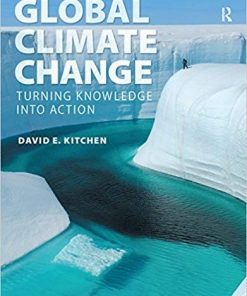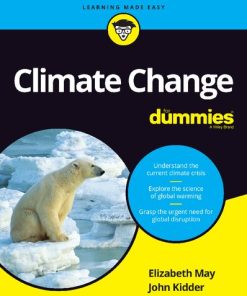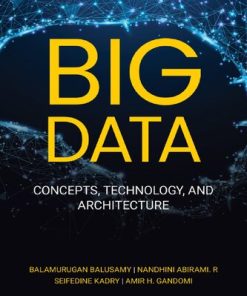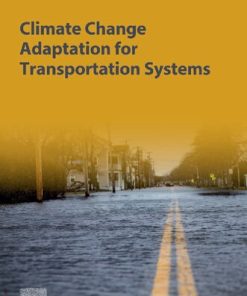Big Data Mining for Climate Change 1st edition by Zhihua Zhang, Jianping Li 0128187043 9780128187043
$50.00 Original price was: $50.00.$25.00Current price is: $25.00.
Big Data Mining for Climate Change 1st edition by Zhihua Zhang, Jianping Li – Ebook PDF Instant Download/DeliveryISBN: 0128187043, 9780128187043
Full download Big Data Mining for Climate Change 1st edition after payment.
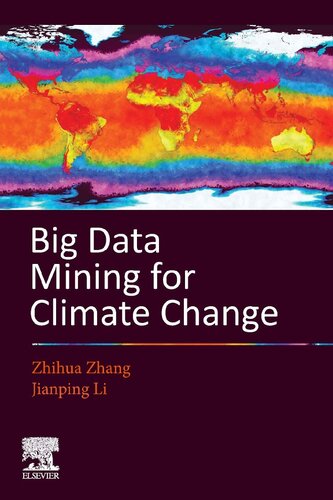
Product details:
ISBN-10 : 0128187043
ISBN-13 : 9780128187043
Author: Zhihua Zhang, Jianping Li
Climate change mechanisms, impacts, risks, mitigation, adaption, and governance are widely recognized as the biggest, most interconnected problem facing humanity. Big Data Mining for Climate Change addresses one of the fundamental issues facing scientists of climate or the environment: how to manage the vast amount of information available and analyse it. The resulting integrated and interdisciplinary big data mining approaches are emerging, partially with the help of the United Nation’s big data climate challenge, some of which are recommended widely as new approaches for climate change research. Big Data Mining for Climate Change delivers a rich understanding of climate-related big data techniques and highlights how to navigate huge amount of climate data and resources available using big data applications. It guides future directions and will boom big-data-driven researches on modeling, diagnosing and predicting climate change and mitigating related impacts.
Big Data Mining for Climate Change 1st Table of contents:
Chapter 1: Big climate data
Abstract
1.1. Big data sources
1.2. Statistical and dynamical downscaling
1.3. Data assimilation
1.4. Cloud platforms
Further Reading
Chapter 2: Feature extraction of big climate data
Abstract
2.1. Clustering
2.2. Hidden Markov model
2.3. Expectation maximization
2.4. Decision trees and random forests
2.5. Ridge and lasso regressions
2.6. Linear and quadratic discriminant analysis
2.7. Support vector machines
2.8. Rainfall estimation
2.9. Flood susceptibility
2.10. Crop recognition
Further Reading
Chapter 3: Deep learning for climate patterns
Abstract
3.1. Structure of neural networks
3.2. Back propagation neural networks
3.3. Feedforward multilayer perceptrons
3.4. Convolutional neural networks
3.5. Recurrent neural networks
3.6. Long short-term memory neural networks
3.7. Deep networks
3.8. Reinforcement learning
3.9. Dendroclimatic reconstructions
3.10. Downscaling climate variability
3.11. Rainfall-runoff modeling
Further Reading
Chapter 4: Climate networks
Abstract
4.1. Understanding climate systems as networks
4.2. Degree and path
4.3. Matrix representation of networks
4.4. Clustering and betweenness
4.5. Cut sets
4.6. Trees and planar networks
4.7. Bipartite networks
4.8. Centrality
4.9. Similarity
4.10. Directed networks
4.11. Acyclic directed networks
4.12. Weighted networks
4.13. Random walks
4.14. El Niño southern oscillation
4.15. North Atlantic oscillation
Further Reading
Chapter 5: Random climate networks and entropy
Abstract
5.1. Regular networks
5.2. Random networks
5.3. Configuration networks
5.4. Small-world networks
5.5. Power-law degree distribution
5.6. Dynamics of random networks
5.7. Entropy and joint entropy
5.8. Conditional entropy and mutual information
5.9. Entropy rate
5.10. Entropy-based climate network
5.11. Entropy-based decision tree
Further Reading
Chapter 6: Spectra of climate networks
Abstract
6.1. Understanding atmospheric motions via network spectra
6.2. Adjacency spectra
6.3. Laplacian spectra
6.4. Spectrum centrality
6.5. Network eigenmodes
6.6. Spectra of complete networks
6.7. Spectra of small-world networks
6.8. Spectra of circuit and wheel network
6.9. Spectral density
6.10. Spectrum-based partition of networks
Further Reading
Chapter 7: Monte Carlo simulation of climate systems
Abstract
7.1. Random sampling
7.2. Variance reduction technique
7.3. Stratified sampling
7.4. Sample paths for Brownian motion
7.5. Quasi-Monte Carlo method
7.6. Markov chain Monte Carlo
7.7. Gibbs sampling
Further Reading
Chapter 8: Sparse representation of big climate data
Abstract
8.1. Global positioning
8.2. Embedding rules
8.3. Sparse recovery
8.4. Sparse representation of climate modeling big data
8.5. Compressive sampling of remote sensing big data
8.6. Optimality
Further Reading
Chapter 9: Big-data-driven carbon emissions reduction
Abstract
9.1. Precision agriculture
9.2. Oil exploitation
9.3. Smart buildings
9.4. Smart grids
9.5. Smart cities
Further Reading
Chapter 10: Big-data-driven low-carbon management
Abstract
10.1. Large-scale data envelopment analysis
10.2. Natural resource management
10.3. Roadway network management
10.4. Supply chain management
10.5. Smart energy management
Further Reading
Chapter 11: Big-data-driven Arctic maritime transportation
Abstract
11.1. Trans-Arctic routes
11.2. Sea-ice remote-sensing big data
11.3. Sea-ice modeling big data
11.4. Arctic transport accessibility model
11.5. Economic and risk assessments of Arctic routes
11.6. Big-data-driven dynamic optimal trans-Arctic route system
11.7. Future prospects
People also search for Big Data Mining for Climate Change 1st:
data mining environmental impact
big data for climate
big data for climate change
big data global warming
data mining in climate
Tags: Big Data Mining, Climate Change, Zhihua Zhang, Jianping Li
You may also like…
Technique - Transport
Uncategorized
Data Mining for Business Analytics: Concepts, Techniques and Applications in Python eBook
Computers - Algorithms and Data Structures
Computers - Applications & Software
Big Data in Astronomy: Scientific Data Processing for Advanced Radio Telescopes 1st Edition




